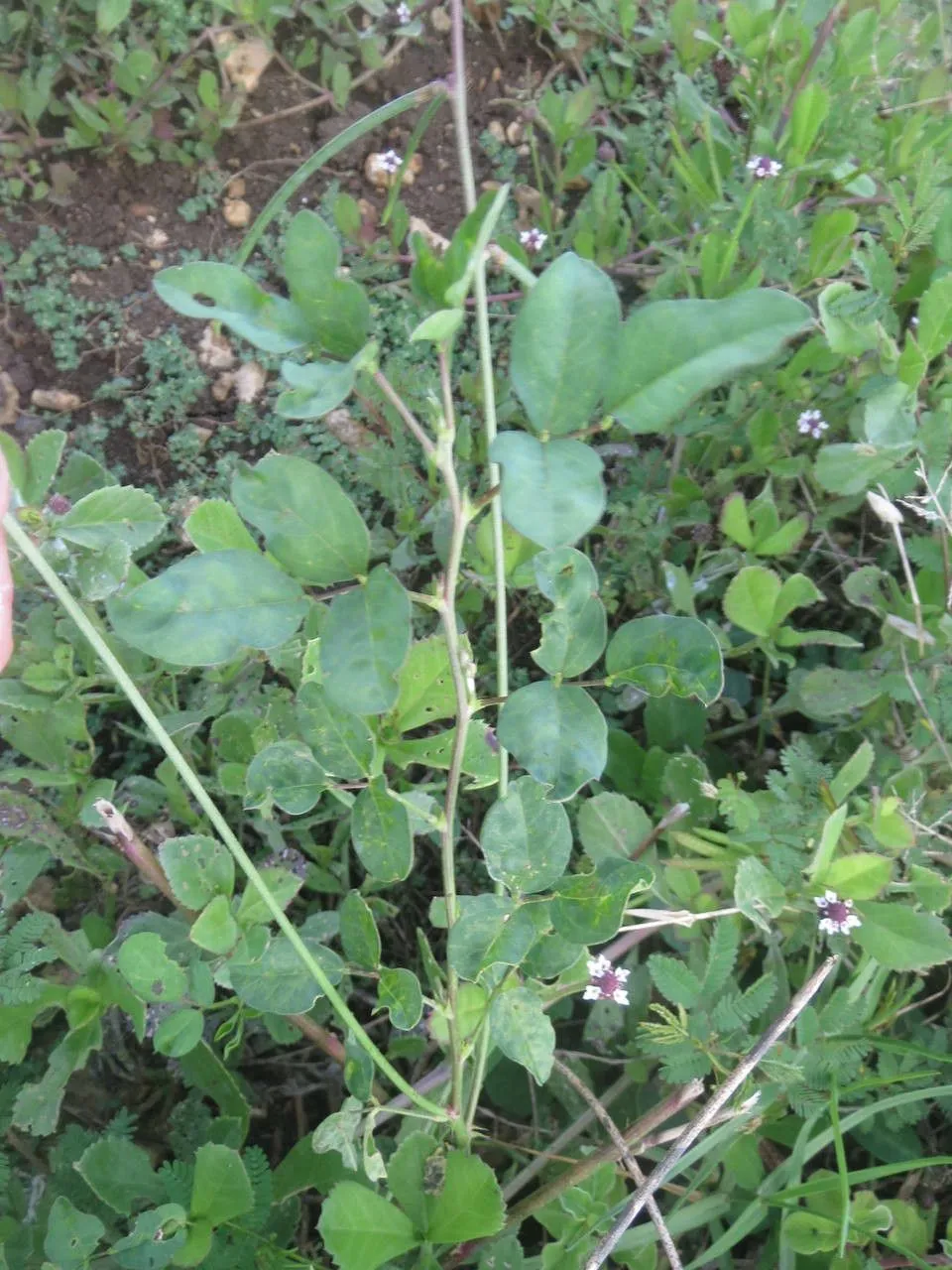
Author: (L.) Urb.
Bibliography: Symb. Antill. 9: 457 (1928)
Year: 1928
Status: accepted
Rank: species
Genus: Macroptilium
Vegetable: False
Observations: Trop. & Subtrop. America
The Phasemy-bean, scientifically known as Macroptilium lathyroides, is a noteworthy species within the vast and diverse family of Fabaceae. First classified extensively in 1928 by the botanist Urban, who recognized it in the “Symbolae Antillanae,” this plant has since piqued the interest of both botanists and horticulturists alike.
Native to the regions of tropical and subtropical America, the Phasemy-bean thrives in a variety of climates and environmental conditions. It is adaptable and resilient, characteristics that have allowed it to spread and establish itself across many countries within its natural range.
The Fabaceae family, to which the Phasemy-bean belongs, is renowned for its economic and ecological importance. Plants within this family are often utilized for their nitrogen-fixing capabilities, which improve soil health and fertility. Macroptilium lathyroides is no exception, engaging in a symbiotic relationship with Rhizobium bacteria to convert atmospheric nitrogen into a form that plants can use for growth.
This leguminous plant is also recognized for its unique floral structures. It produces vibrant, pea-like flowers that are not only visually striking but also play a crucial role in attracting pollinators. These blooms give rise to pods containing the seeds, which contribute to the plant’s propagation.
Moreover, the Phasemy-bean’s robust growth habit and drought tolerance make it an excellent candidate for agricultural use, particularly in regions prone to adverse weather conditions. It can serve as a cover crop, helping to prevent soil erosion and maintain moisture levels. Its ability to enrich the soil with nitrogen also supports subsequent crops, promoting sustainable farming practices.
In summary, Macroptilium lathyroides or the Phasemy-bean, is a significant species within the Fabaceae family, valued for its ecological benefits, adaptability, and role in sustainable agriculture. As a plant native to the tropics and subtropics of America, it continues to be an important subject of study and utilization in various agricultural and ecological applications.
Deu: phasemybohne
Eng: wild bushbean, phasemy-bean, phasey-bean
Spa: frijolito de los arrozales, pico de aura
En: Phasemy-bean, Phasey-bean, Wild bushbean, Wild Bush-Bean, Hare’s-foot Fern, Pea Bean, Phasey Bean, Wild Bush Bean, Wild bean
Zh: Da yi dou, 大翼豆, 寬翼豆
Fr: Pois-poison
De: Phasemybohne
Ja: Nanban-akabana-azuki
Pt: Feijão-de-rola
Es: Frijolito de los arrozales, Pico de aura, Habichuela Parada
Zh-tw: 寬翼豆
Th: ถั่วผี
To: Piinivao
Zh-hant: 大翼豆
© copyright of the Board of Trustees of the Royal Botanic Gardens, Kew.
© copyright of the Board of Trustees of the Royal Botanic Gardens, Kew.
© copyright of the Board of Trustees of the Royal Botanic Gardens, Kew.
Taken Nov 5, 2019 by Jeremy Parans (cc-by-sa)
Taken Jan 1, 1900 by EOL − Acevedo, P. (cc-by-nc-sa)
Taken Sep 10, 2022 by TheLifeOf Brandon (cc-by-sa)
Taken Nov 23, 2021 by Rosita So (cc-by-sa)
Taken Aug 5, 2020 by Sekhar Singh (cc-by-sa)
Taken Jul 30, 2022 by Trap Hers (cc-by-sa)
Taken Jun 29, 2022 by Trap Hers (cc-by-sa)
Taken Jan 27, 2022 by Gomes Alex (cc-by-sa)
Taken Nov 5, 2019 by Jeremy Parans (cc-by-sa)
Taken Sep 10, 2022 by TheLifeOf Brandon (cc-by-sa)
Taken Jan 1, 1900 by EOL − Forest & Kim Starr (cc-by)
Taken Oct 12, 2015 by EOL − colinmorita (cc-by-nc)
Taken Oct 16, 2013 by Thomas Delhotal (cc-by-sa)
Taken Oct 16, 2013 by Thomas Delhotal (cc-by-sa)
Taken Oct 16, 2013 by Thomas Delhotal (cc-by-sa)
Taken May 12, 2020 by Gladys Nazario (cc-by-sa)
Taken Dec 18, 2020 by Mélanie Herteman (cc-by-sa)
Taken Mar 24, 2019 by Ujang Sahidin (cc-by-sa)
Taken Jan 1, 1900 by EOL − Más & Lugo-Torres (cc-by-nc-sa)
Taken Jun 26, 2021 by Marzanna Bug (cc-by-sa)
Taken Nov 26, 2016 by Nelson Zamora Villalobos (cc-by-nc)
Taken May 11, 2022 by bradnon bradnon (cc-by-sa)
Taken Oct 12, 2019 by Nelson Zamora Villalobos (cc-by-nc)
Taken Nov 5, 2019 by Jeremy Parans (cc-by-sa)
Taken Dec 8, 2007 by Tela Botanica − Liliane Roubaudi (cc-by-sa)
Growth habit>: Vine, Forb/herb
Ph maximum: 8.0
Ph minimum: 7.5
Light: 8
Atmospheric humidity: 7
Soil nutriments: 2
Soil salinity: 1
Family: Myrtaceae Author: (F.Muell.) K.D.Hill & L.A.S.Johnson Bibliography: Telopea 6: 402 (1995) Year: 1995 Status:…
Family: Rubiaceae Author: Pierre ex A.Froehner Bibliography: Notizbl. Bot. Gart. Berlin-Dahlem 1: 237 (1897) Year:…
Family: Sapindaceae Author: Koidz. Bibliography: J. Coll. Sci. Imp. Univ. Tokyo 32(1): 38 (1911) Year:…
Family: Asteraceae Author: A.Gray Bibliography: Pacif. Railr. Rep.: 107 (1857) Year: 1857 Status: accepted Rank:…
Family: Fabaceae Author: Medik. Bibliography: Vorles. Churpfälz. Phys.-Ökon. Ges. 2: 398 (1787) Year: 1787 Status:…
Family: Aspleniaceae Author: (Cav.) Alston Bibliography: Bull. Misc. Inform. Kew 1932: 309 (1932) Year: 1932…